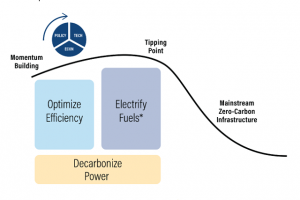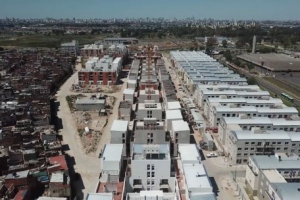Build on the momentum created by other community movements – Finnish ways
1.5-Degree Lifestyles framework is an efficient instrument for cities to link their climate and circular economy policies to communities. Cities must improve the quality of lives for all residents, lay the basis for sustainable infrastructure and promote lifestyle shifts. The conversion to 1.5-Degree lifestyles must contribute to a higher quality of life.
Can circular economy strategies help dissociate well-being from resource consumption?
It is developed by the Finnish innovation fund SITRA and IGES, the 1.5-Degree Lifestyles framework quantifies how drastically carbon footprints must be reduced in order to meet the 1.5-degree goal and the lifestyle alterations that are the most effective for this transition.
Japan pledged to become carbon neutral by 2050 and is putting the circular economy at the forefront of its climate efforts with the aim of redesigning consumption and production systems to mitigate consumption-based emissions.
Finland aspires to be carbon neutral by 2035 and is now developing a strategic program to transform its economy into one that is based on the principles of the circular economy.
The city of Turku, a winner in localizing the circular economy, is coordinating the inputs of Finnish cities and regions to the strategic program.
This framework is also relevant for developing countries as there we are dealing with future behaviours ,which will emerge as cities grow, making the 1.5-Degree lifestyles framework an important customizing tool. In cities of the developing world where most of the built environment is yet to be constructed, infrastructure planning must support 1.5-Degree Lifestyles in a practical manner, to avoid suffocating a growing population with carbon-intensive practices for decades to come.
The ways to communicate with cities about 1.5-Degree lifestyles are:
(1) Modifying the message by focusing on its co-benefits such as cost savings, health, practicality, sense of community that are most relevant to different target groups.
(2) Using different campaign channels for different contexts as it is key to diversify communication channels and reach out to various stakeholders depending on the context.
(3) Start with easy lifestyle shifts people can implement right away, such as reducing consumption of meat and dairy products, buying second-hand things and holidaying in places accessible by public transport.
Being at the intersection of consumption and production systems, cities are relevant enablers to create trust and meeting points for different stakeholders to contribute to 1.5-Degree Lifestyles. This Lifestyle efforts must be holistic and rooted in a transition of city services, infrastructures and business innovations towards decarbonization.
It also presents an opportunity for cities to communicate about their climate efforts in a persuasive and empowering way that can build on the momentum created by other community movements.
Image courtesy: citywalk














Add Comment